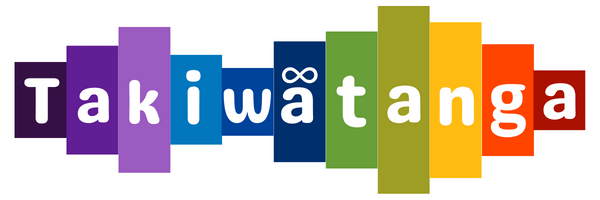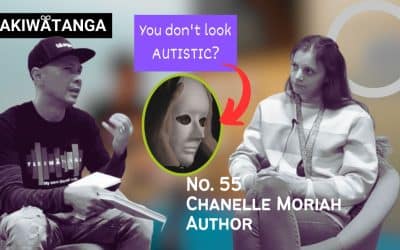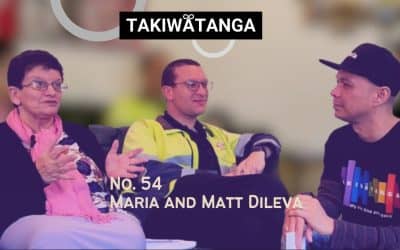Takiwātanga with Lloyd I AM
My Own time and space | Love not Cure
S01 E09: Sensory processing Day 4 Target behaviour and Mind Map
UNEDITED Transcription
This is Lloyd I AM and you are listening to Takiwatanga, love not cure, exploring autism one strength at a time.
All right, so it’s day four of the sensory processing training at Hutt Hospital. And we only had two families joining in that session, three person to be exact, plus the two other experts. This was originally a 01:00 p.m. Session but was rescheduled to 09:30 A.m. Due to availability and so forth. So I think they are trying to manage the rooms as well because it’s a little bit busy during this time because of the rising COVID cases and stuff. Anyway, during that session it was not a theory discussion and we have activity or activities. So what I mean is or it was an activity focus discussion and we were introduced to this tool named MindMap. So in my case personally, it’s no longer a new tool for me because I use that tool at work.
[00:01:59.120]
And Mind Map is a kind of diagram to visually organize information. So basically it’s just a diagram that you draw on a piece of paper or you can draw it online as well. If you have a computer, you can draw their applications around. It where you can itemize all the different activities or functionalities or areas. Should I say that will need to be identified so that you can target or change a certain behavior? So this is a Mind Map M-I-N-D. Mind and Map, M-A-P. Just in case you would like to do some research about it, but going to try and post a photo of this one somewhere online so that you can also have an idea on what it would look like. So I actually don’t have any or I never thought that we can use this one for autism. I always thought that we are just going or this tool only applies to work, which is kind of amazing as well because given I am pretty much aware on how this is used, I guess we can start using the tool or this tool more frequently. So what goes on in this Mind Map is again like I said previously, that we can use this as a tool to target certain behavior which we would like to change.
[00:03:55.190]
Again, this is more of a focusing kind of thing. We need to focus on a certain behavior, just one behavior at a time so that at least we won’t overwhelm the person or the child that we are trying to understand on how we can change the behavior that needs to be improved if that makes sense. Alright, so again how is it currently drawn in this page or in this paper that we were provided is that if you have a target behavior it sits on the center. So you just need to identify your goals for your child and then what target behavior is more important at that point in time? And then once you have identified your target behavior you’ll put that as the center of the page and then it usually is being drawn where you have multiple arrows going outside of the center towards different areas where you would want or where there will be a possible impact on that certain behavior. So in this example we have a target behavior of running away. What this means is that my son usually runs away every time we go to school visits because of his transition period from kindy to primary.
[00:05:42.080]
So I guess during that time he is being overrun by the place. So what happened in this mind map is we have a target behavior at the center and then there’s an arrow pointing towards outside on the right side of the corner which is sensory. So this may have an impact on this target behavior. And then there’s another arrow pointing downwards to the other corner which is anxiety, an arrow pointing downwards at the center which is developmental ability and also an arrow pointing downwards towards the lower left corner of the page or the paper which is diagnosis. And then at the center left of the page as well which is physical. And then another arrow pointing towards up to the right corner which is behavior and another one which is pointing upwards at the center which is emotions. So these are the different areas that we are going to look at to see what is impacting the running away behavior of my child. So for the sensory is it too loud in the area or at school or are there too many people in the classroom which is making the sensory more aggressive and then visually overwhelming?
[00:07:21.350]
So when you look at the classroom, is it visually overwhelming? And then will singing helps in that specific point in time or what other activities or other tools that we can use inside the classroom to lower the sensitivity of the sensory at that point in time and then from there you can find what tool or tools you can prepare on when going to school. If it’s too loud, I would say you can bring an ear Muff for your child that your child can use when visiting at school. So at least it’s not going to be noisy in his point of view or in his perception or sensory perception. And then if it’s too bright as well we might need to lower down the lights inside the classroom. But again it’s going to be a bit challenging when you have a good Sunshine outside because that brightness outside will also be able to enter the classroom, which is going to make the classroom brighter as well. And then if we go to anxiety, what behavior or what instance says that may result to running away. So every time in our case, every time he is running away, he for sometimes or has his cup full when he wakes up in the morning.
[00:09:08.440]
So meaning he kind of like woke up at the wrong side of the bed in the morning. And we need to manage that behavior. So once he is already on high alert, remember we did talk about the alertness or alert levels. We need to manage that alert level from high to just right. So we need to introduce some activity or anything that will lower down his alert level. So at least his anxiety or Cop will be, will no longer be full and we can lessen whatever is in that cop. Then next we have developmental ability. We have identified that he is very smart. He is reading at his age or at his age. And then he can do spelling writing, though he’s non verbal. He started to talk or speak, though at some point or sometimes it doesn’t make sense. I mean, he will just say something out of certain situation which is not relatable to that instance. But yeah, he started to speak, but it’s a bit tricky because we cannot say that he is nonverbal. He can’t just communicate it properly or communicate properly to us, but he can speak, he can sing, he can write and so forth.
[00:10:38.030]
And then he also got good motor skills and he’s very strong. So that’s in his developmental ability area. And then if we move on down to the diagnosis area, he was diagnosed with autism, which is that’s the only thing that we have written. But if you have other diagnosis, you can write other things as well and then moving on. We have the physical area. He’s running away because he is sick, he’s tired, and he just wants to go home or somewhere. So that’s the physical area. That’s the only thing that we have identified at that point. And then behavior, what’s his behavior making him run away during school visits, or was he confused of the routine because he’s doing transition at that point and then at the same time after that he will eventually go to his kindy and then we may have changed some routines that he’s usually aware of and comfortable with doing. So that’s the thing. So is that something that is resulting to that? And then another thing is the behavior he wants to explore or likes routine, which is yeah, I think I did say that I was talking about the physical and then I was looking at another different area.
[00:12:14.530]
But yeah, that’s all about the behavior. Sorry about that. It’s a bit confusing as I am looking at this material. But anyway, yeah, that’s all about behavior. Does he want to explore that’s why he’s running away. He wanted to run away outside of the school or just because he is now confused with his routine. So he just wants to go home and so on. And then the next area is the emotion or emotions. Was he upset at that time of running and then was he excited or happy or did he get enough or bored during the session? Because sometimes there are kids who are when they get in a session or in a visiting session in the classroom, they just get bored because it’s not something that they wanted to do at that point in time. And then was he confused or overwhelmed? So, yeah, these are the different target or different areas that may have impacted the target behavior. But yeah, like I said, this is a good tool because you can start itemizing what activity or sensory activities that our child is doing. All right. So that is the core discussion that we’ve had.
[00:13:40.630]
Or there was an example that was given by the other parent, but I am unaware of the details about the situation that they had. So I’m not going to talk about that scenario. So it’s more of like what we have experienced. So the reason why we’ve chosen the target behavior as running away is that because frequently my son is a bit overwhelmed or most of the time overwhelmed during visiting sessions and he usually runs away where I can remember there was a time which my wife told me that when they have done the visiting or they are going to visit the school intermediary school or sorry, primary school for the transition period, there was a time that when they have arrived in the classroom, my son just said Hi and then bye bye. And then he just ran away and went to the gate and he’s trying to climb on the gate and trying to climb the gate so he can go outside of the school compound, which is a bit tricky because he’s got no sense of danger, actually, to be honest, he will just run away and he won’t care if he’s going to cross the road with or without cars.
[00:15:07.730]
It’s not going to look, it’s just going to run straight crossing the street, which is kind of very worrying for me and my wife as parents. All right, so this is the target behavior. Sorry, this is the mind map tool that we were taught how to use on our case as parent with child with autism. Yeah. It’s going to be a bit tricky at first because especially for those who haven’t heard about my map and for me being having experience on using this on a different area, which is work related. And it’s easier for me to understand how it’s used at work. So it’s a bit tricky for me to use this one on this level. So I guess that’s it for me for now. So it’s a bit confusing and a bit what you call that. It kind of sounded like I don’t know what I’m talking about here, which is kind of true. Anyway, I’m just trying to learn about this how to use this on a health perspective rather than work perspective but I know that the concept is just the same but in terms of how you will apply it, it requires more deeper understanding because you will need to remember and see how your child is behaving for one area only.
[00:17:00.730]
So we’re not talking about multiple areas. It’s just one area. That’s what we discussed during the last session. So I guess that’s it for me for now. I’ll be back with another interesting topic on next episode. So that finishes our sensory training which is a four day training held at Hot hospital and if you know there are trainings available for you that you can utilize or you can join which is free for most of the time, especially if you’ve got your assessment or you’ve got your formal assessment. This is usually free that is being driven by either different ministries or different sectors around your area. They should be available. Just ask your point person or your coordinator and they should be able to give you information about it or they should be able to put you on the list. So yeah, I guess that’s it for now.
Every tangata whaiTakiwātanga or person with autism is different. If you fail with one strategy, don’t stop, keep moving forward. Always remember that for every failure encounter is one step closer to your success.
Thanks for tuning in, until next time…
Me mutu te Whakawa Haere, Let’s stop judging others
Me Mahi Tahi Tatou, Let’s all work together,
Kia Maia – Kia Kaha, Be brave and Be strong




0 Comments